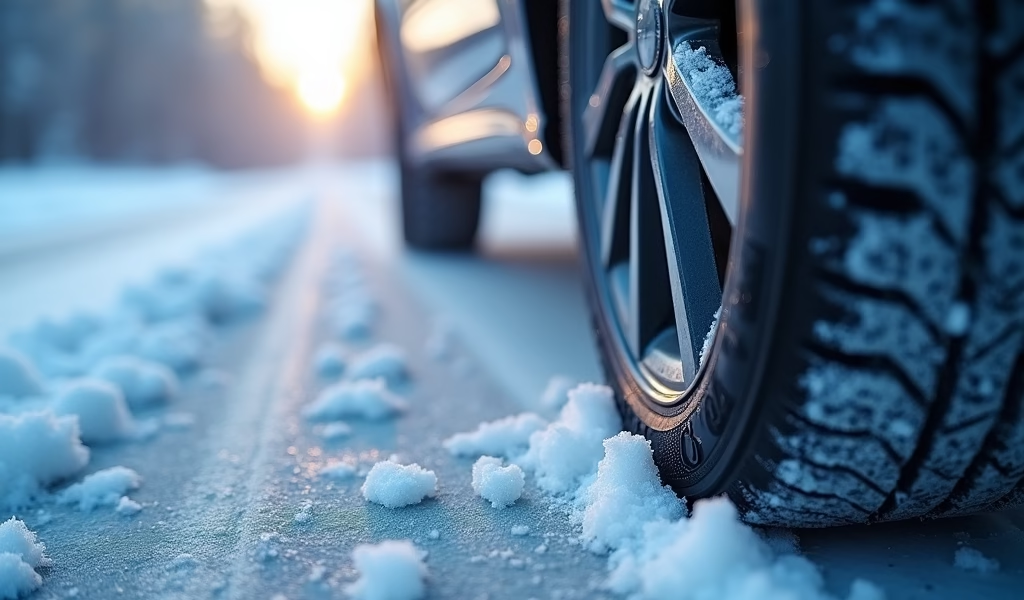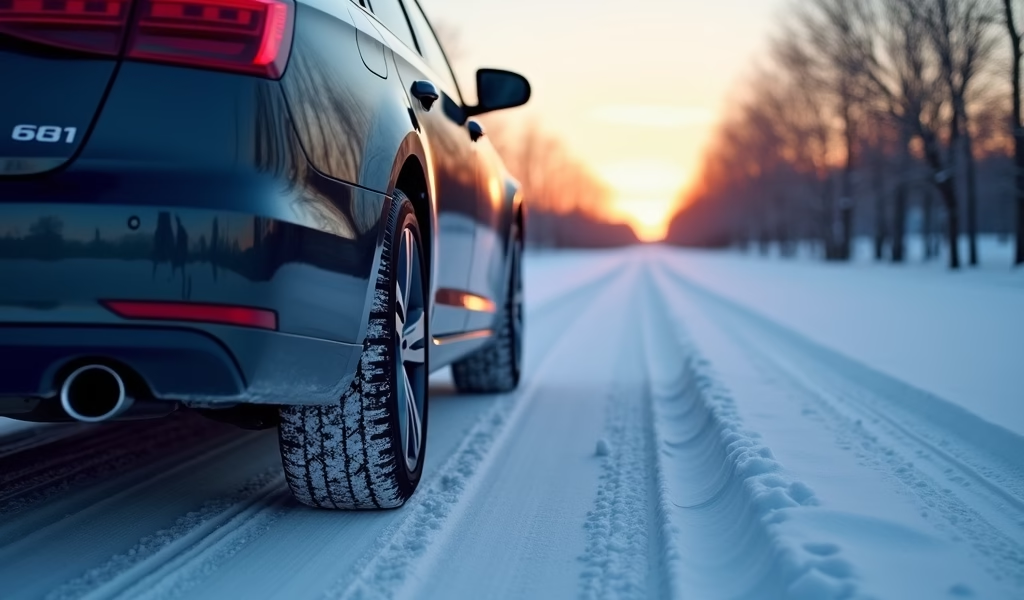Overview
This article provides seven essential maintenance tips for studded winter tires, including proper installation timing, maintaining correct tire pressure, regular rotation, mindful driving techniques, proper off-season storage, stud inspection, and avoiding unnecessary wear. Following these expert recommendations helps extend tire life, maximize performance on icy roads, and ensure safety during winter driving conditions.
Table of Contents
- Proper Installation and Removal Timing
- Maintain Correct Tire Pressure
- Rotation Schedule for Even Wear
- Mindful Driving Techniques
- Proper Off-Season Storage
- Regular Stud Inspection
- Avoid Unnecessary Wear
- Conclusion
- Frequently Asked Questions
When winter transforms our roads into icy challenges, having the right tires becomes crucial for safe driving. As a master mechanic with over 20 years of experience, I’ve seen firsthand how quality winter tires can make the difference between confident winter driving and white-knuckle terror. Studded winter tires, with their tiny metal teeth that bite into ice, offer exceptional traction in the most severe conditions. But like any specialized tool, they need proper care to perform their best.
These specialized tires represent a significant investment in your safety, and with proper maintenance, they’ll keep you secure on winter roads for several seasons. Let’s dive into seven proven care tips that will help you maximize performance and extend the life of your studded tires.
Proper Installation and Removal Timing
Timing is everything with studded tires. Install them too early, and you’ll wear down those precious metal studs on dry pavement. Wait too long, and you might find yourself sliding through the first unexpected snowfall.
The sweet spot for installation is when temperatures consistently hover below 45°F (7°C). For most northern regions, this typically falls between mid-October and early November. But don’t just follow the calendar—follow the thermometer.
Equally important is knowing when to remove them. Most states have legal restrictions on studded tire use, typically requiring removal by late April or early May. In Washington state, for example, the cutoff date is March 31, while Alaska allows them until May 1. According to the U.S. Department of Transportation, these regulations exist not just to protect roads from damage but also because studded tires actually perform worse than regular tires on clear pavement.
Remember: Each day driving on bare roads with studded tires is like taking sandpaper to those metal studs. The grinding wears them down prematurely, reducing their effectiveness when winter returns in full force.
Maintain Correct Tire Pressure
Winter’s chill affects more than just your morning motivation—it dramatically impacts tire pressure too. For every 10°F drop in temperature, your tire pressure decreases by about 1 PSI. This silent deflation compromises traction and increases wear patterns that can permanently damage your expensive winter rubber.
During the coldest months, I recommend checking your tire pressure at least twice monthly—more frequently during severe cold snaps. The correct pressure for winter tires is typically the same as your vehicle’s standard recommendation (found on the driver’s door jamb sticker), but always consult your owner’s manual to be certain.
A pro tip from my garage: Always check pressure when tires are cold for the most accurate reading. “Cold” means the vehicle hasn’t been driven for at least three hours. Even a short drive warms the tires and increases pressure readings, potentially leading to dangerous underinflation when they cool back down.

Rotation Schedule for Even Wear
Your studded tires work as a team, but like any team, some members work harder than others. Front tires on front-wheel-drive vehicles shoulder the burden of both steering and power delivery, causing them to wear differently than rear tires.
To ensure even wear across all studs, rotate your studded tires every 3,000-5,000 miles during winter use. This regular maintenance ensures each tire spends time in different positions, distributing wear patterns evenly and extending the life of your entire set.
For most vehicles, I recommend following a cross-rotation pattern: move front tires to the opposite rear position (right front to left rear, and left front to right rear), while rear tires move straight forward. This balanced approach ensures your studs maintain uniform effectiveness throughout the winter season.
If you’re running directional tires (with arrows showing rotation direction), you’ll need to swap front-to-back on the same side instead. When in doubt, consult your owner’s manual or swing by your local shop—we’re always happy to advise on proper rotation patterns for your specific vehicle.
Mindful Driving Techniques
How you drive dramatically affects stud longevity. I’ve seen perfectly good studded tires rendered ineffective after just one season of aggressive driving. Here’s how to treat them right:
- Avoid jackrabbit starts. Each time you accelerate aggressively, those metal studs work overtime, gradually loosening their hold in the rubber.
- Skip the sudden stops. Hard braking forces studs to dig in unnecessarily, potentially damaging both the studs and the tire structure.
- Watch your highway speed. At high speeds, heat generation weakens the bond between studs and rubber. When possible, keep speeds moderate during long highway stretches.
Here’s something counterintuitive that many drivers miss: be extra mindful when driving on clear pavement. While the best winter tires excel on ice, studded varieties are actually less effective than regular winter tires on bare roads. Plus, exposed asphalt accelerates stud wear significantly.
When safely possible, position your vehicle to drive on snow-covered sections rather than bare pavement. Your studs will last longer, and you’ll actually get better traction in those conditions.
Proper Off-Season Storage
When spring arrives, giving your studded tires proper “accommodations” during their off-season is crucial for extending service life. This is something I stress to all my customers—proper storage can add years to tire longevity.
Before storage, wash your tires with mild soap and water to remove road salt, grime, and brake dust that can corrode metal studs and degrade rubber over time. Ensure they’re completely dry before storage—moisture is rubber’s enemy during long-term rest.
Store your tires in a cool, dry location away from direct sunlight, heat sources, and ozone-producing equipment like furnaces or electric motors. The ideal temperature range is between 50°F and 75°F (10°C-24°C).
Position matters too. If storing unmounted, stack them horizontally. If mounted on rims, either hang them (not by the valve stems) or stand them upright, rotating their position monthly to prevent flat-spotting and distortion.
Consider tire bags or covers designed specifically for tire storage—they help protect against dust accumulation and minimize exposure to air, which can dry out rubber compounds over time. This small investment pays dividends in extended tire life.

Regular Stud Inspection
Your studded tires begin life with hundreds of tiny metal troops ready to battle ice, but over time, some may go AWOL. Regular inspection helps ensure your traction army remains at full strength.
At least monthly during winter, inspect your tires for missing or damaged studs. This visual examination takes just minutes while you’re checking pressure or cleaning your car. Pay particular attention to the outer edges, where studs often experience the most stress during cornering.
Listen for unusual sounds while driving. A clicking or metallic rattling often indicates loose studs that need immediate attention. If you notice several missing studs in one area, or more than 10-15 missing studs per tire, consult a professional immediately.
In my shop, we recommend a professional inspection midway through the winter season. Experienced eyes can spot early signs of stud loosening before they become safety issues and provide guidance on whether repair or replacement is necessary.
Some high-quality tire shops can actually replace individual studs, though this becomes less economical if numerous studs are missing. According to Tire Rack’s winter tire experts, once stud loss exceeds 25%, replacement is generally the safest option.
Avoid Unnecessary Wear
Beyond driving habits, several seemingly minor factors can significantly impact studded tire lifespan. After decades in the garage, I’ve noticed these subtle habits make a big difference:
When parking for extended periods, try to avoid stopping with the studs pressed against curbs or parking blocks. The constant pressure against concrete can gradually push studs deeper into the tire or damage their exposed tips.
Avoid high-heat environments at all costs. Never park near industrial exhausts or other heat sources that could raise tire temperatures significantly. Heat softens the rubber, potentially allowing studs to shift or loosen.
Be strategic about your routes when possible. Rough, abrasive surfaces like gravel roads, freshly laid asphalt, or roads with exposed aggregate concrete will accelerate stud wear significantly. Sometimes the longer route on better roads is actually the more economical choice for your tires in the long run.
If you drive in areas that use road salt heavily, rinse your tires regularly during winter thaws. Road salt doesn’t just corrode your vehicle’s metal components—it can also attack the metal studs, leading to premature failure and rust staining on your wheels.
Conclusion
Properly maintained studded winter tires aren’t just a purchase—they’re an investment in your safety and peace of mind during the most challenging driving months. By following these seven care tips, you’re not only extending the life of an expensive set of tires but also ensuring they perform at their peak when you need them most.
The modest time commitment these maintenance steps require pales in comparison to the cost of premature replacement—or worse, the consequences of tire failure in hazardous winter conditions. When comparing winter tires vs all-season options, the specialized nature of studded winter tires makes proper maintenance even more critical.
Remember that studded tires represent the pinnacle of winter traction technology, but they require respect and care to deliver their full potential. Treat them right, and they’ll keep you and your loved ones safe through many winter seasons to come.
Have you discovered your own tips for extending studded tire life? Share your experiences in the comments below. And if you’re uncertain about your current studded tires’ condition, schedule an inspection with your trusted mechanic before winter arrives in full force.
Frequently Asked Questions
How much do studded winter tires typically cost?
Studded winter tires typically range from $150-$300 per tire, depending on size and quality. Installation and balancing usually adds another $15-$25 per tire.
Are studded tires better than regular winter tires?
Studded tires excel specifically on ice and hard-packed snow but perform worse on dry or wet pavement. Regular winter tires offer better overall performance across varied winter conditions.
Can I replace individual studs in my winter tires?
Yes, individual studs can be replaced by qualified tire shops with the proper equipment. This service becomes less economical when numerous studs are missing.
How long do studded winter tires typically last?
With proper care and seasonal use only, studded winter tires typically last 3-4 winter seasons. Stud effectiveness generally diminishes before the tire tread wears out.
Is it legal to use studded tires year-round?
No, most states and provinces restrict studded tire use to winter months only, typically November through March or April. Check your local regulations as penalties can include fines.

